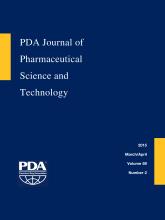Abstract
Of importance to the biological properties of proteins produced in cell culture systems are the complex post-translational modifications that are affected by variations in process conditions. Protein oxidation, oxidative modification to intracellular proteins that involves cleavage of the polypeptide chain, and modifications of the amino acid side chains can be affected by such process variations. Dissolved oxygen is a parameter of increasing interest since studies have shown that despite the necessity of oxygen for respiration, there may also be some detrimental effects of oxygen to the cell. Production and accumulation of reactive oxygen species can cause damage to proteins as a result of oxidation of the cell and cellular components. Variation, or changes to cell culture products, can affect function, clearance rate, immunogenicity, and specific activity, which translates into clinical implications. The effect of increasing dissolved oxygen on protein oxidation in immunoglobulin G3–producing mouse hybridoma cells was studied using 50 mL high-throughput mini-bioreactors that employ non-invasive optical sensor technology for monitoring and closed feedback control of pH and dissolved oxygen. Relative protein carbonyl concentration of proteins produced under varying levels of dissolved oxygen was measured by enzyme-linked immunosorbent assay and used as an indicator of oxidative damage. A trend of increasing protein carbonyl content in response to increasing dissolved oxygen levels under controlled conditions was observed.
LAY ABSTRACT: Protein oxidation, oxidative modification to intracellular proteins that involves cleavage of the polypeptide chain, and modifications of the amino acid side chains can be affected by variations in dissolved oxygen levels in cell culture systems. Studies have shown that despite the necessity of oxygen for respiration, there may be detrimental effects of oxygen to the cell. Production and accumulation of reactive oxygen species can cause damage to proteins as a result of oxidation of the cell and cellular components, affecting function, clearance rate, immunogenicity, and specific activity, which translates into clinical implications. The effect of increasing dissolved oxygen on protein oxidation in immunoglobulin G3–producing mouse hybridoma cells was studied using 50 mL high-throughput mini-bioreactors that employ non-invasive optical sensor technology for monitoring and closed feedback control of pH and dissolved oxygen. Protein carbonyl concentration of proteins produced under varying levels of dissolved oxygen was measured by enzyme-linked immunosorbent assay and used as an indicator of oxidative damage. A trend of increasing protein carbonyl content in response to increasing dissolved oxygen levels under controlled conditions was observed.
- © PDA, Inc. 2015
PDA members receive access to all articles published in the current year and previous volume year. Institutional subscribers received access to all content. Log in below to receive access to this article if you are either of these.
If you are neither or you are a PDA member trying to access an article outside of your membership license, then you must purchase access to this article (below). If you do not have a username or password for JPST, you will be required to create an account prior to purchasing.
Full issue PDFs are for PDA members only.
Note to pda.org users
The PDA and PDA bookstore websites (www.pda.org and www.pda.org/bookstore) are separate websites from the PDA JPST website. When you first join PDA, your initial UserID and Password are sent to HighWirePress to create your PDA JPST account. Subsequent UserrID and Password changes required at the PDA websites will not pass on to PDA JPST and vice versa. If you forget your PDA JPST UserID and/or Password, you can request help to retrieve UserID and reset Password below.






